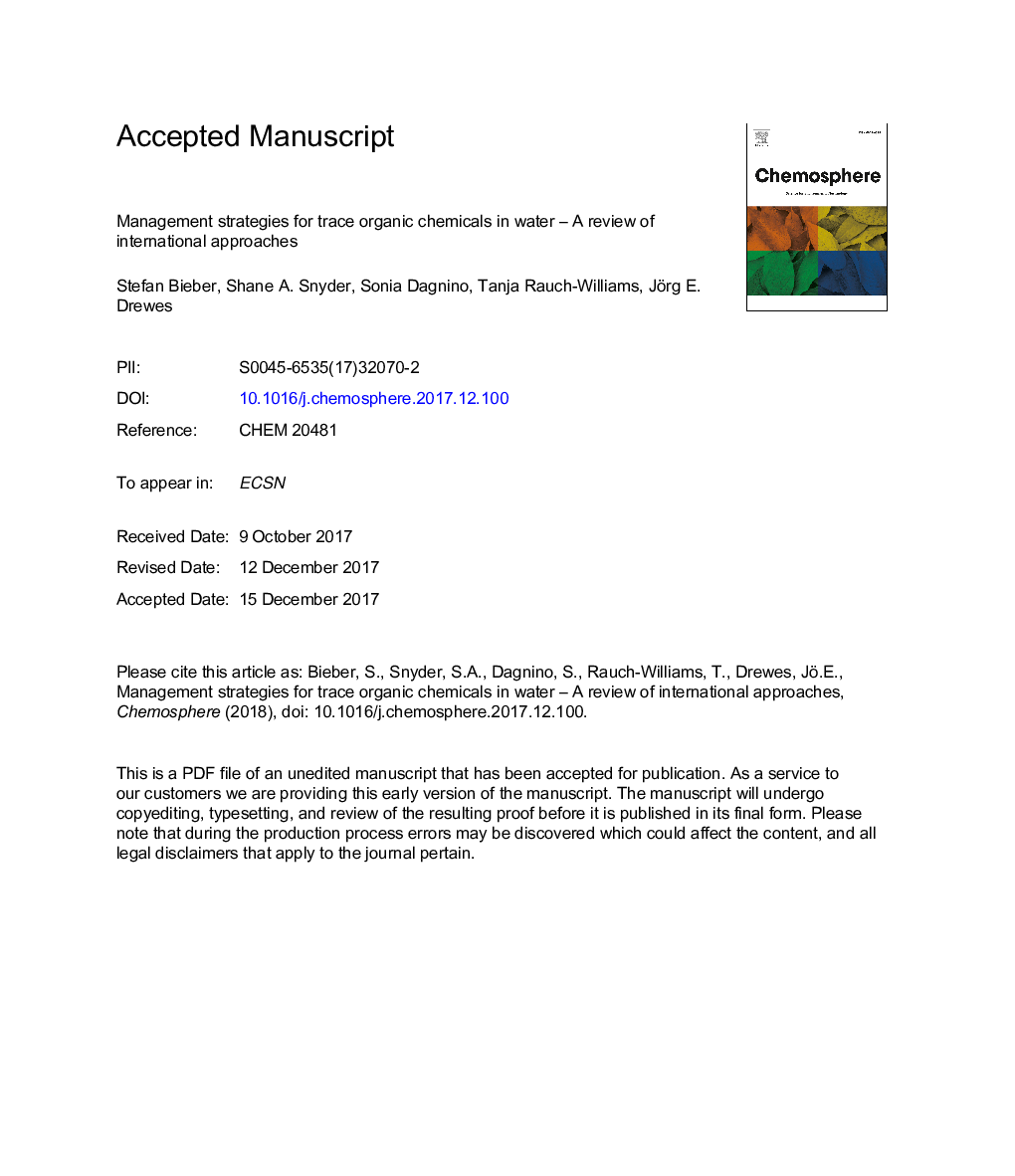| Article ID | Journal | Published Year | Pages | File Type |
|---|---|---|---|---|
| 8852269 | Chemosphere | 2018 | 40 Pages |
Abstract
To ensure an appropriate management of potential health risks and uncertainties from the release of trace organic chemicals (TOrCs) into the aqueous environment, many countries have evaluated and implemented strategies to manage TOrCs. The aim of this study was to evaluate existing management strategies for TOrCs in different countries to derive and compare underlying core principles and paradigms and to develop suggestions for more holistic management strategies to protect the environment and drinking water supplies from the discharge of undesired TOrCs. The strategies in different industrial countries were summarized and subsequently compared with regards to three particular questions: 1) Do the approaches different countries have implemented manage all or only specific portions of the universe of chemicals; 2) What implementation and compliance strategies are used to manage aquatic and human health risk and what are their pros and cons; and 3) How are site-specific watershed differences being addressed? While management strategies of the different countries target similar TOrCs, the programs differ in several important aspects, including underlying principles, the balance between aquatic or human health protection, implementation methods, and financing mechanisms used to fund regulatory programs.
Keywords
Related Topics
Life Sciences
Environmental Science
Environmental Chemistry
Authors
Stefan Bieber, Shane A. Snyder, Sonia Dagnino, Tanja Rauch-Williams, Jörg E. Drewes,
